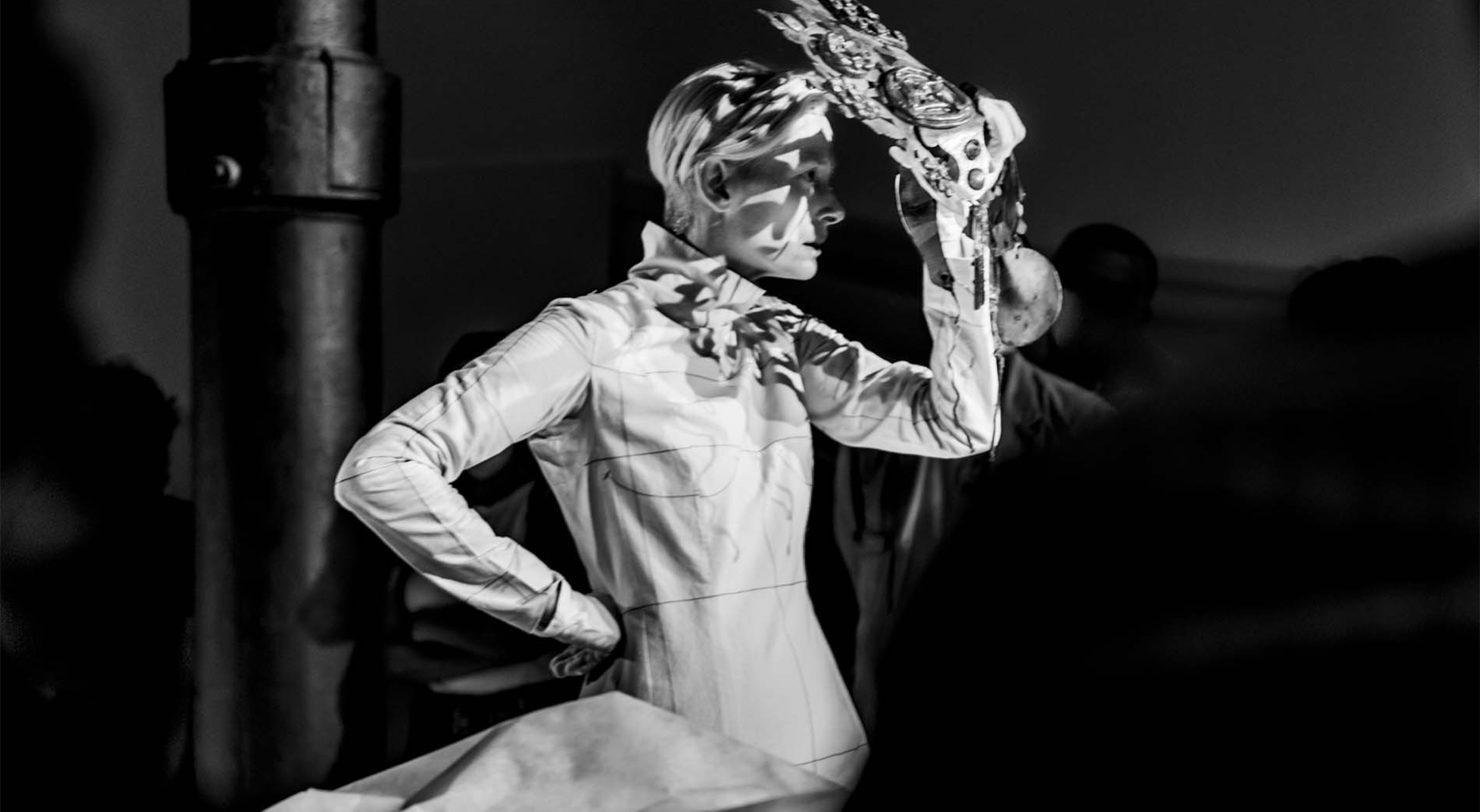Olivier Saillard et Tilda Swinton
Embodying Pasolini
decemberdec 3 – 10
Created and interpreted by Olivier Saillard and Tilda Swinton
Artistic collaboration, Gaël Mamine
Assistant, Romain Blot
Costumes, Danilo Donati @ Farani workshops, directed by Luigi Picolo
Wooden shapes, Pieroni workshops, directed by Massimo Pieroni.
Studio manager, Aymar Crosnier
Produced by Studio Olivier Saillard
Co-produced by Zetema Progetto Cultura, Roma and Azienda, Festival d’Automne à Paris
In collaboration with Fondazione Sozzani and La Mode en Images
With the support of the Ateliers Farani – Luigi Piccolo for the costumes and the Laboratorio Pieroni
In partnership with the Clef Tour Eiffel The Crest Collection by the Ascott Limited
With support from Gucci
Embodying Pasolini is an original performance created by Olivier Saillard and Tilda Swinton. For the first time, the event brings together a wide selection of costumes designed by Danilo Donati, prepared by the Farani workshop for Italian director Pier Paolo Pasolini.
Pasolini’s filmography finds its reflection in a set of nearly thirty costumes, dresses, coats, and hats. These fragile pieces feature woven and dyed thread. The costumes and outfits from The Gospel According to St. Matthew, Oedipus Rex, A Thousand and One Nights and Salo, or the 120 Days of Sodom, all of which are archived in Rome, highlight the long-lasting and fruitful collaboration between Pasolini and Donati. The performance retraces the process leading up to the exhibition: when the pieces were discovered, identified, and assessed, until they were brought into this space and worn again, which was originally prohibited. In this case, the pieces are exhibited on human shoulders, flesh and bone. The transient costumes, silent prisoners of their monumental allure, go back to work for one last scene. On Tilda Swinton’s fleeting, contrasted body, these costumes make a brief appearance for a daring try-on session, with an audience full of witnesses. Swinton, a silent mannequin captive to its own memory, tries on the costumes for everyone to see. Captured in the fabric, she doesn’t play the part of the costumes’ original wearers. Instead, her role is precisely the lack of a role, highlighting a now explicitly orphaned costume, separated from the body, from the actors, from the films.
